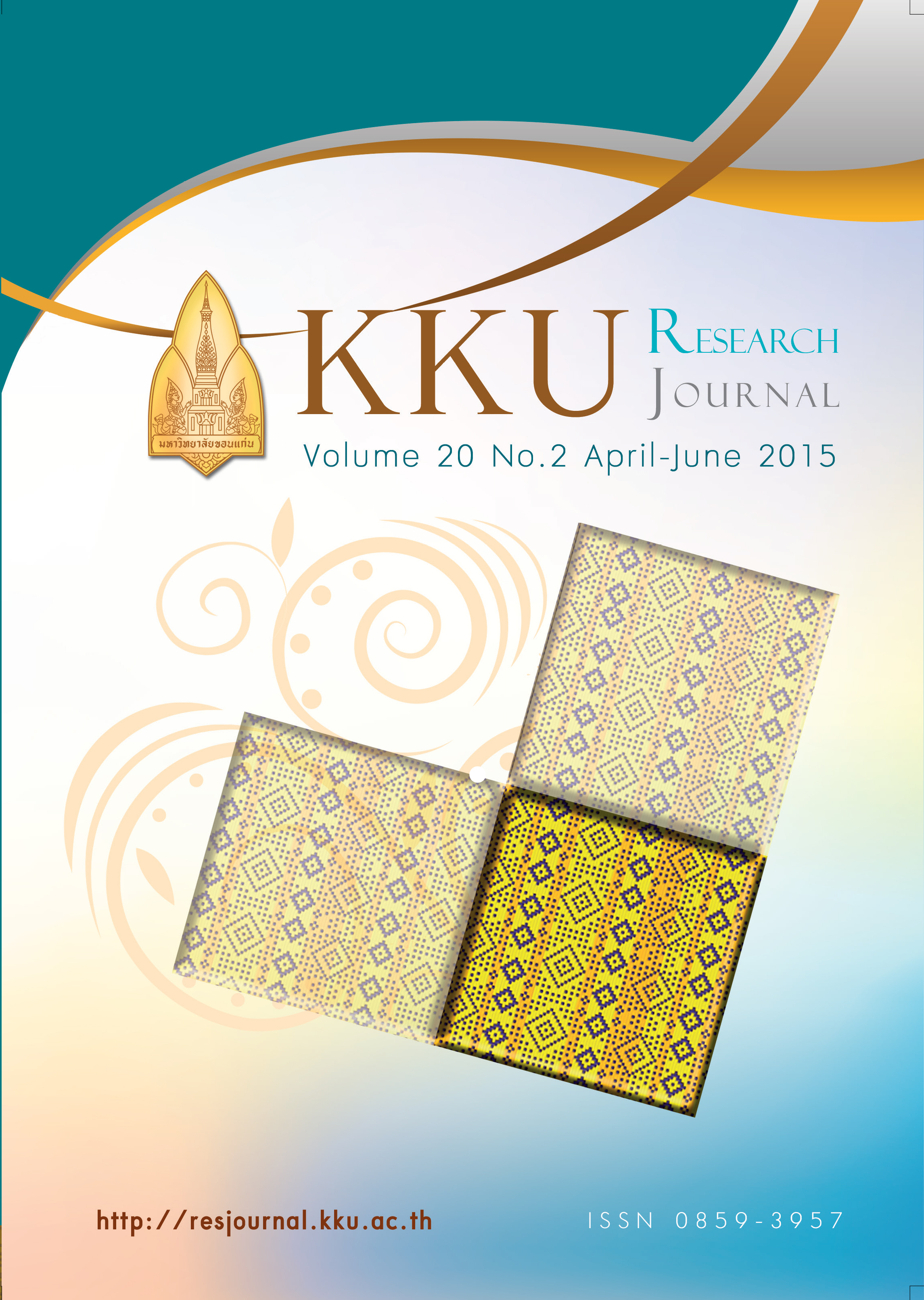Aedes aegypti larval habitats and dengue vector indices in a village of Ubonratchathani province in the north-east of Thailand
Main Article Content
Abstract
The objectives were to survey Aedes aegypti larval breeding habitats and analyze dengue vector indices. This larval vector survey was conducted in Dongklang village in Ubon Ratchathani province over two years in 2012 and 2013. During each year, dengue vector indices, House Index (HI), Container Index (CI), and Breteau Index (BI), were collected for two periods, dry season (January-April) and wet season (May-August). The number of households infested with larvae in the different years and periods were compared using chi-square test. The results showed in 2012, HI, CI, and BI were 52.7%, 19.9%, and 135.1% respectively in the dry season. In the wet season, the indices decreased. In 2013, dengue vector indices again tended to decrease from dry seasonal to wet seasonal periods. The numbers of households that were infested by Aedes larvae did not differ between years and seasons. Dengue vector indices are alternative methods to predict Aedes mosquito distribution and can be used in the making of decisions in relation to the development of health systems, planning, prevention, and control of dengue infection
Article Details
References
[2] Kanchana N. and Nitin K. T. An information value based analysis of physical and climatic factors affecting dengue fever and dengue haemorrhagic fever incidence. International Journalof Health Geographics. 2005; 4 (13): 1-13.
[3] Preechaporn, W., Jaroensutasinee, M., and Jaroensutasinee, K. The larval ecology of Aedes aegyptiand Ae. albopictus in three topographical areas of Sothern Thailand. Dengue Bull. 2006; 30: 204-213.
[4] Wongkoon, S., Jaroensutasinee, M., and Jaroensutasinee, K. Larval infestration of Aedes aegyptiand Ae. albopictus in Nakhon Sri Thummarat, Thailand. Dengue Bull. 2005; 29: 169–175.
[5] National Institute of Communicable Diseases. Investigation & control of outbreaks dengue fever&dengue hemorrhagic fever. Ministry of Health and Family Welfare (GOI): New Delhi; 2001.
[6] National Statistical Office, Thailand. Temperature and Rainfall [Internet]. 2013 [cited 2015 Feb 9]. Available from: http://service.nso.go.th/nso/web/statseries/statseries27.html.
[7] World Health Organization. A system of world-wide surveillance for vectors. WHO: Weekly Epidemiol Rec; 1972. p. 73–84.
[8] Bhandari KP, Raju PLN, Sokhi BS. Application of GIS modeling for dengue fever prone area based on socio-cultural and environmental factors- a case study of Delhi city zone. The International Archives of the Photogrammetry,Remote Sensing and Spatial Information Sciences. 2008; 37(B8): 165-70.
[9] Sheppard PM, Macdonald WW and Tonn RJ. A new method of measuring the relative prevalence of Aedesaegypti. Bull World Health Organ. 1969; 40(3): 467-68.
[10] Vinod Joshi , R.C. Sharma. Impact of vertically-transmitted dengue virus on viability of egg of virus-inoculated Aedes aegypti. Dengue Bulletin. 2001; 25: 103-06.
[11] Hlaing M. T., Khin M. A. and Soe T.. The effect of temperature and humidity on dengue virus propagation in Aedes aegyptimos-quitoes. Southeast Asian J Trop Med Pub Hlth. 1998; 29(2): 280-284.
[12] Thavara U. Tawatsin A. Chansang C. Larval occurrence, oviposition behavior and biting activity of potential mosquito vector of dengue on Samui Island, Thailand. Journal of Vector Ecology. 2001; 26: 172-180.


